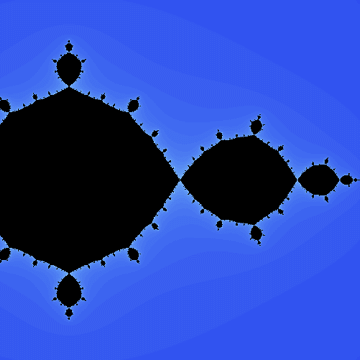Are there mini-mandelbrots inside the julia set?
This answer has two parts: a partial negative and a partial positive.
Why Julia sets are typically much simpler than the Mandelbrot set
Julia sets of rational functions can be computed using an inverse iteration technique that shows them to be something close to self-similar. This helps explain the extreme regularity displayed when zooming into most Julia sets. For example, here we zoom in to the Julia set for $f(z)=z^2-1$ increasing the magnification by a factor of the Golden ratio with each step.

Unlike this, the Mandelbrot set gets more complicated with each step in magnification, rather than staying at the same basic level of complexity.
Julia sets that contain part of a Mandelbrot set
Nonetheless, these inverse images are not strict self-similarities (just not so far off for many functions) so more complicated behavior is possible. In fact, the Julia sets of some rational functions do indeed contain some Mandelbrot type behavior. Here's the Julia set of
$$f(z) = \frac{z^3-z}{1+4 z-z^2}$$

Note the appearance of something that looks like the period two bulb of the Mandelbrot set. I believe that there is, in fact, a genuine correspondence here but that the true nature is not yet fully understood. It appears to be related to the fact that the period two bulb is missing from the parameter space for a related family of functions:
$$f_a(z) = \frac{z^3-z}{1+az-z^2}$$
The study of this family is ongoing by Jane Hawkins and her students at UNC Chapel Hill and you can find more in her papers, particularly the ones that have the term "rational maps" in the title.
The Mandelbrot set has nonempty interior, so if a Julia set contained a Mandelbrot set, then necessarily that Julia set would have nonempty interior. As soon as a Julia set has nonempty interior, however, it must be all of the Riemann sphere.